Japan has become, in a few years, the global capital of denim.
Why such a craze? What makes Japanese denim so special?
Japan and jeans, a story of passion and tradition
Contrary to what one might imagine, what is commonly called "Japanese fabric" today originated in the 1960s in the Okayama region.

The Okayama region, and more specifically the city of Kojima, has a long history in the workwear industry and the making of school uniforms, but it was not until the 1960s that the first factories began producing denim.
After World War II, jeans were introduced by American soldiers into Japanese society. They quickly became popular, and imported American jeans became a fashionable product.
Okayama manufacturers who had the right looms naturally began experimenting with jeans production, thus giving birth to the Japanese denim industry.
Like other jeans-producing countries, Japan has had its ups and downs over the decades. Productivity gains often led to quality losses, prompting some companies to refurbish their old looms.
A true return to the roots and a quest to regain the golden age of denim then began.
With purists like Pure Blue Japan, Oni and Momotaro, denim is gradually regaining its prestige. Today, it is renamed "Selvedge" or "Japanese fabric", but the machines used and the methods employed for its manufacture remain the same as in the past.
Japanese fabric and selvedge denim, what is it?
To be more precise, selvedge jeans, which could be translated as "edged denim," are characterized by natural and clean outer seams that do not fray or come undone.
The word "selvedge" here refers to the "edging," that is, the natural edge of a fabric roll. This involves manufacturing using traditional shuttle looms that weave a continuous weft thread (the weft) back and forth across the entire length of the roll.
The weft then loops back at the fabric's natural edge, thus creating the selvedge. Located along the outer seam of trousers, it is visible when the hem is turned up.
The shuttle of a loom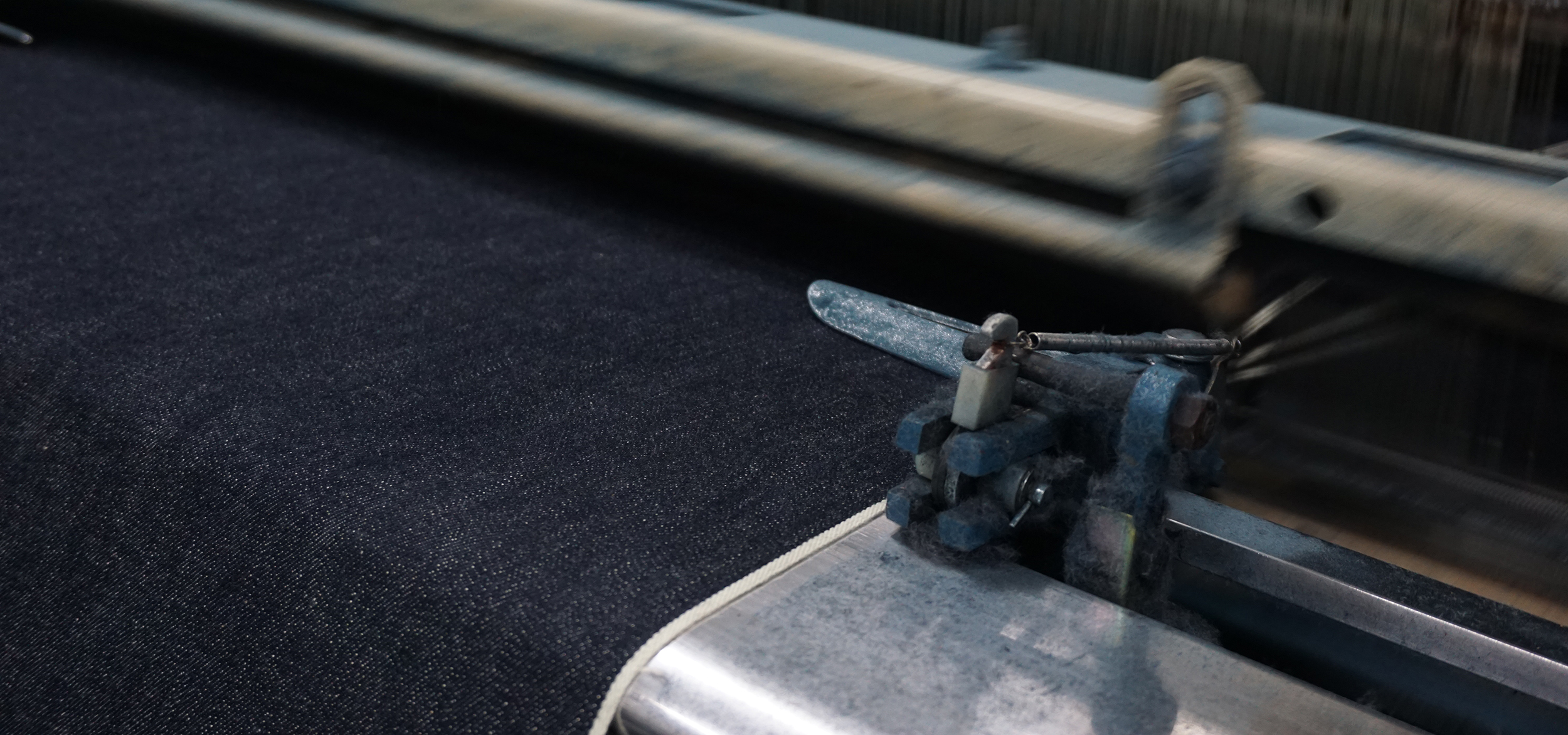
Making a selvedge jean requires nearly 2.80 m of fabric. Thus, to maximize yield, manufacturers use the fabric up to its edges.
The edge of the selvedge is sewn with colored thread (usually red), to allow the weaver to distinguish the assembled fabrics.
Contrary to what is often heard, Japanese jeans are usually made on Japanese looms, notably Toyoda, and not on machines imported from the United States.
Indeed, it was at the end of the 19th century that Sakichi Toyoda invented Japan's first mechanical loom, an invention that revolutionized the textile industry of the archipelago.
In January 1918, Sakichi founded the Toyoda Spinning & Weaving Company and, with the help of his son Kiichiro, achieved the dream of his life by building, in 1924, the country's first automated loom.
Two years later, he founded the Toyoda Automatic Loom Works factory. It is indeed with the 100,000 pounds sterling obtained from the sale of the patent for his automated loom that Kiichiro founded the Toyota Motor Corporation in 1937.
In the 1950s, the growing demand for jeans prompted manufacturers to replace old shuttle looms with modern projectile looms. These new machines enabled the fabric to be produced much faster and in significantly wider widths, thus making possible the considerable expansion of jeans worldwide.
Production on shuttle looms gradually became scarce until it was almost non-existent.
A Toyoda loom.jpg)
The Indigo Dyeing of a Japanese Canvas
Originally, denim fabric is dyed with natural indigo, a blue pigment obtained from the fermentation of indigo plant leaves, known to the Egyptians and Chinese for millennia. This dye has the characteristic of easily fading on cotton.
The technique used to dye the Japanese canvases is called "rope dyeing". Recognized as the best method of dyeing for denim, the threads are dipped into natural indigo, alternating between dips and oxidation.
A surprising detail: before reaching its bluish tint, indigo appears green! It is through the chemical reaction caused by contact with oxygen that the blue shade is revealed.
The more these operations are repeated, the stronger the indigo shade becomes.
As the immersion of cotton in indigo lasts only a short time, the different layers of indigo accumulate, but the core of the fiber remains white. This allows for jeans that will fade better and more quickly than jeans whose warp thread has been dyed more deeply.
Immersing the canvas in indigo.jpg)
Fading of a Momotaro 18oz jeans worn for two years!
The shade of indigo can vary from lighter to darker, depending on the number of dips.
Different shades of indigo tint
Indigo can also be mixed with other pigments.
For example, Greencast jeans produce beautiful blue/green fades by mixing green sulfur dye with indigo dye.
The evolution of a beautiful greencast from BDD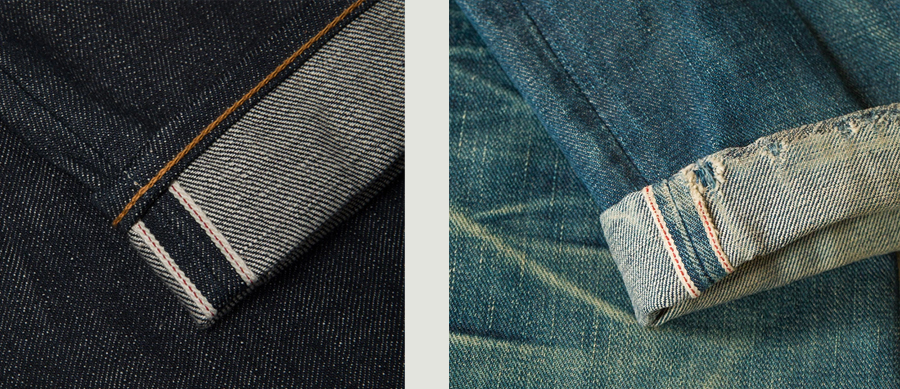
Indigo/Black mixes are also often found.
The evolution of an Indigo X Black from Iron Heart
Some brands go even further to offer fabrics with unique fades.
For this, one can play on the color of the cotton underneath the indigo dye.
If the cotton thread is slightly brown, it is this hue that will gradually appear when the jeans begin to age. This is the case with the Dirty Fade Selvedge from Naked & Famous for example.
The evolution of the patina on a Dirty Fade Selvedge jeans from Naked & Famous
The principle is the same for Blue Core, Green Core, Red, Purple, Rainbow etc...
A Green Core Selvedge jeans from Naked & Famous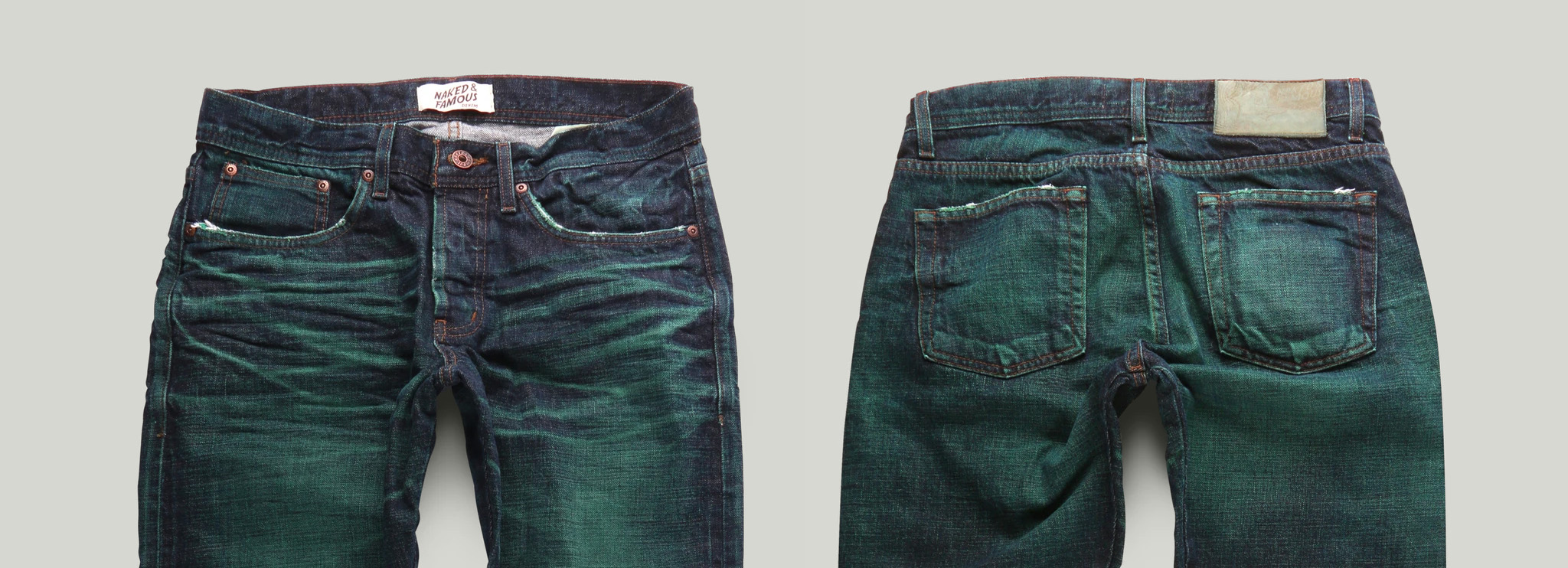
A Red Core Selvedge jeans from Naked & Famous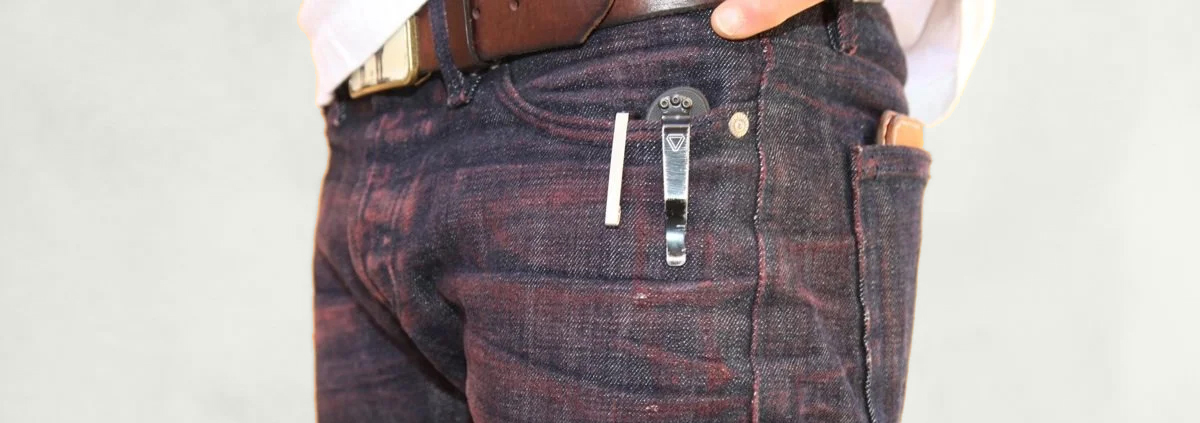
A Naked & Famous Hanami Selvedge jean
A Naked & Famous Rainbow Core Selvedge jean
The different Japanese denim weaving techniques
By using shuttle looms, it is possible to create various types of weaves: right hand twill (the classic weave), left hand twill, broken twill, slubby, neppy, etc...
This allows for fabrics with very different aspects and whose patina qualities will vary from one weaving technique to another.
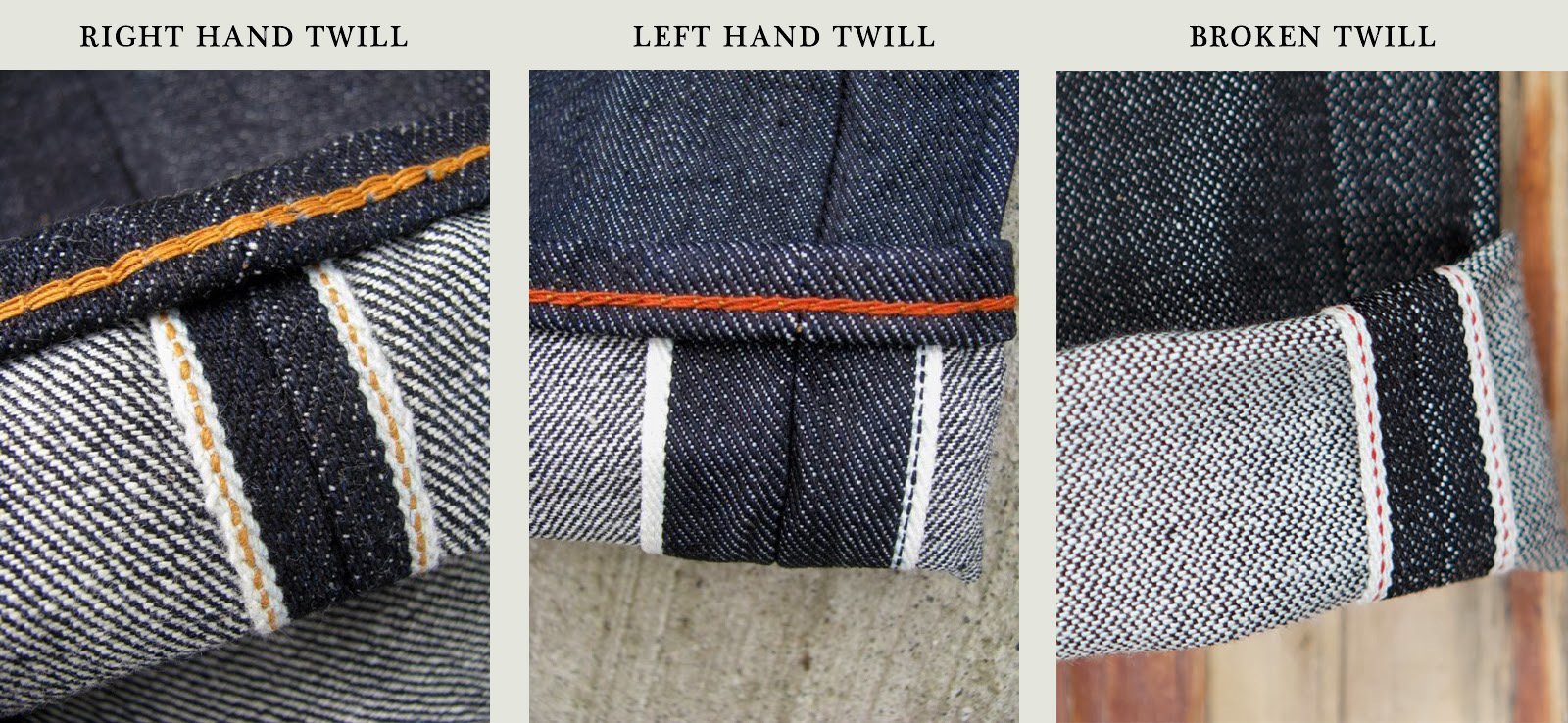
There's nothing better to illustrate this than showing you the two extremes of the genre: Lord of Nep on the left and King Of Slub on the right, both by Naked & Famous.
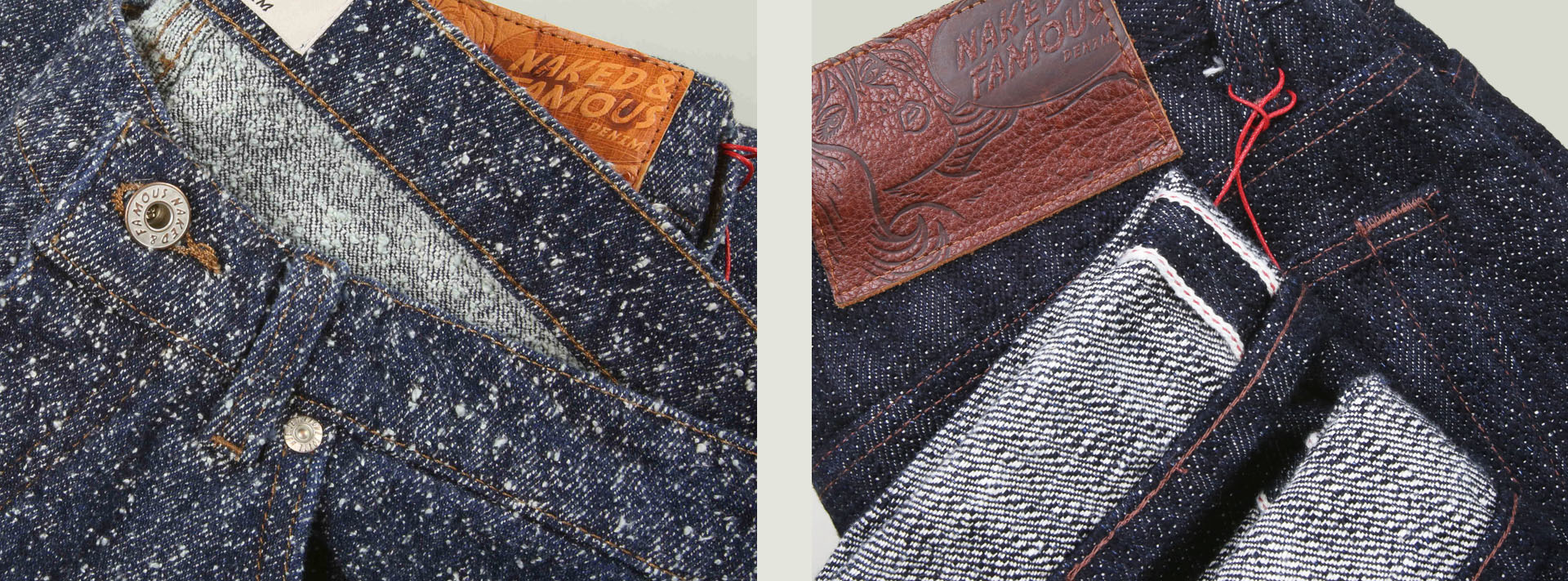
The weight of Japanese denim
It is also possible to obtain fabrics with very heavy or very light weights.
You will find this information on all our product sheets with the measurement in ounces or "oz".
This is one of the most important data for choosing your jeans. For reference, the standard thickness is generally 14.5oz, but with some suppliers, such as Naked & Famous, we have had fabrics ranging from 5oz to 32oz in the past!
The famous 32oz from Naked & Famous, that stand up on their own!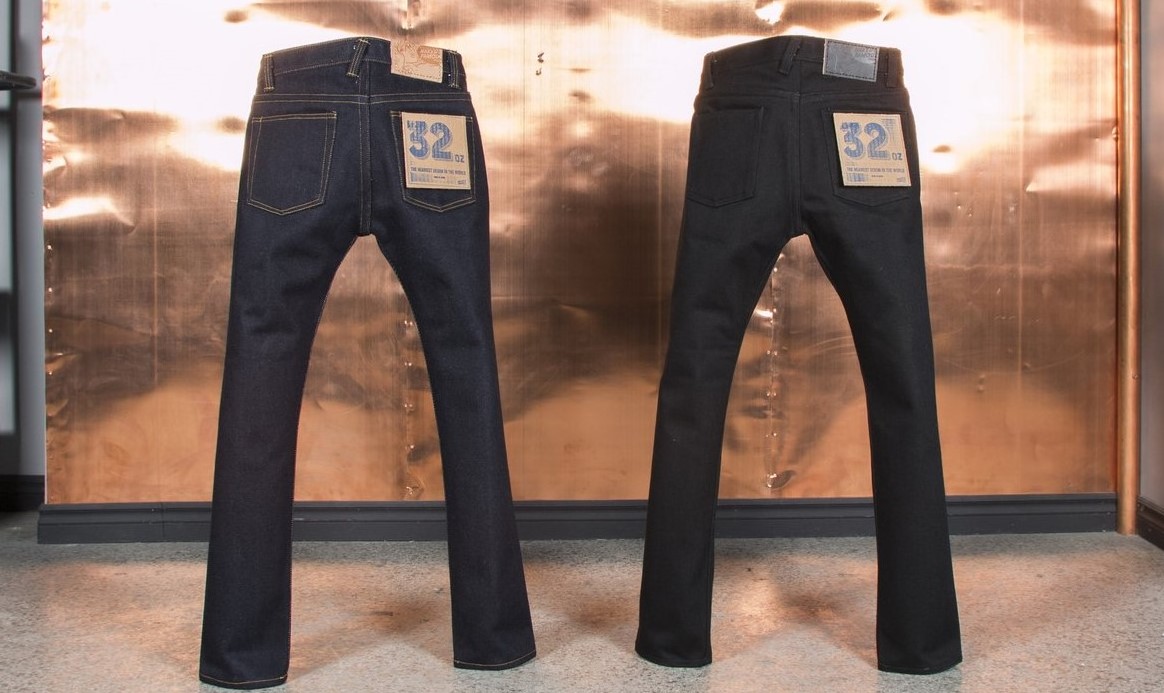
The detailing of a Japanese jean
The best manufacturers also use vintage machines here, such as the American Union Special sewing machines, known for the quality of their chain stitch seams.
There are also copper rivets to reinforce different stress points.
For purists, some details are more subtle, like the peek-a-boo on the coin pocket, or the hidden rivets for the back pockets.
Everyone knows that the devil is in the details!
A vintage Union Special sewing machine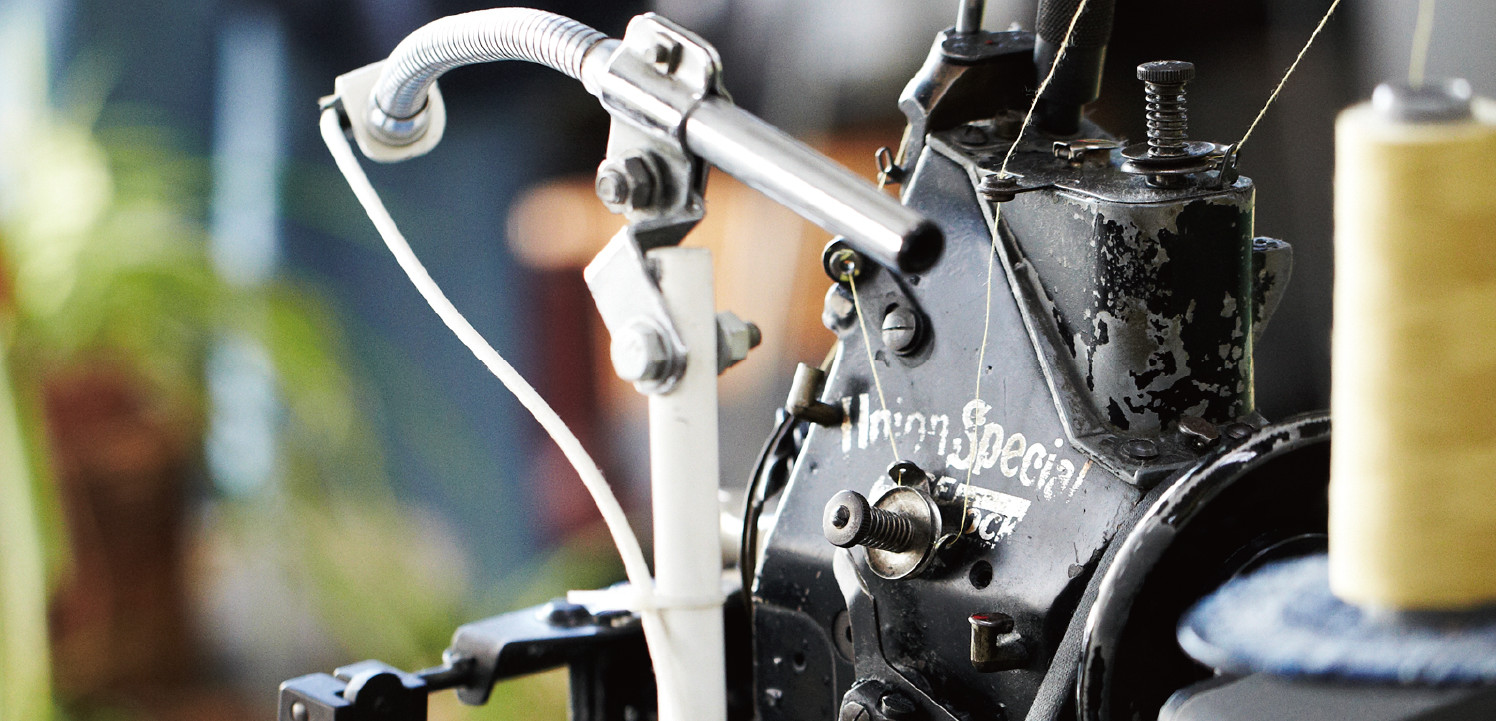
The peek-a-boo of the coin pocket on an ONI jean.jpg)
A hidden rivet on an ONI jean.jpg)
The finish of a Japanese jean
Finally, it is important to explain that a selvedge fabric can be:
- "raw" = the denim is raw. The fabric is woven, the jeans are sewn, nothing more!
Nothing more, might be an understatement. In fact, most selvedge fabrics are "sanforized." This term refers to a process that preshrinks the fabric while maintaining its raw appearance.
The normal shrinkage rate of a non-sanforized selvedge fabric is usually about 10%. For a sanforized jean, the shrinkage is very minimal and generally corresponds to the fabric relaxing after a few days of wear. - "one wash" = the fabric is washed once by the manufacturer. This slightly brings out the blue of the indigo, but more importantly, it sets the size of the jeans and makes the fabric softer. For thicker fabrics, this can be quite appreciable!
- "tempi" = this is a Japanese technique of washing in cold water, then sun drying, which preserves the rough feel of raw denim while preshrinking the fabric.
This is the best possible finish for a selvedge and especially suitable for non-sanforized jeans. - "non-sanforized" = as mentioned above, non-sanforized fabric tends to shrink significantly at the first wash, usually losing a whole size. These are very stiff and rough fabrics that achieve beautiful fading effects.
A non-sanforized jean should therefore be purchased one size larger. This makes selling them in stores more complicated, but from experience, we know that these jeans fit particularly well after several months, as the fabric molds to the wearer.
All these explanations make it easy to understand that the machines and skilled craftsmen to use them are rare, most being concentrated in the Okayama region.
Therefore, selvedge is a more costly fabric to produce, but its quality is incomparable to that of standard denim fabric.
At Flâneurs, we have specialized in selling Japanese denim for over 15 years.
Passionate about Japanese fabric and clothing that carries a tradition and craftsmanship, we regularly visit Japan to tour the factories and make new connections to enrich our selection with high-quality items.
A selection of our Japanese denim jeans at our Flâneurs store in Rennes.jpg)


.JPG)